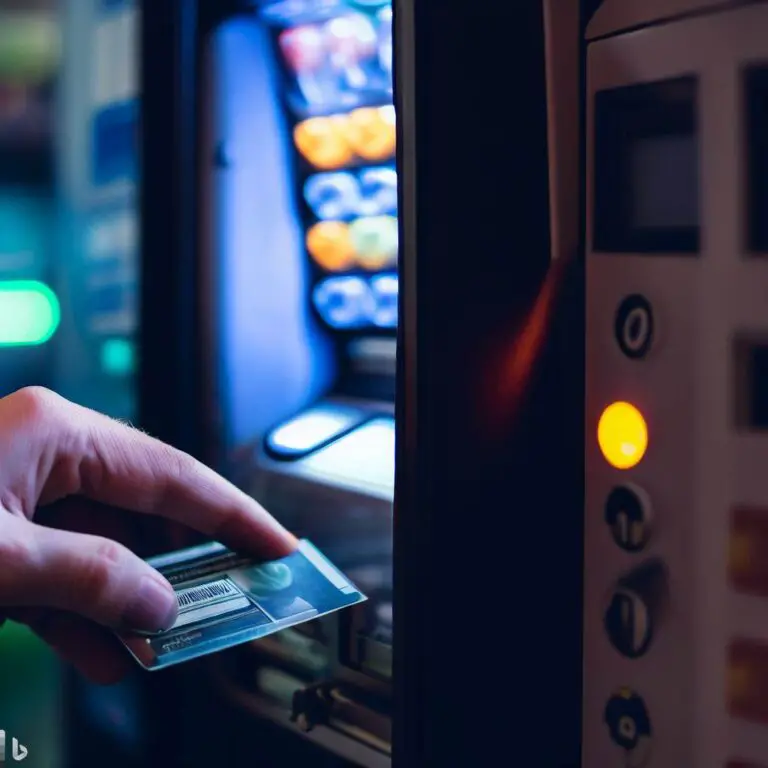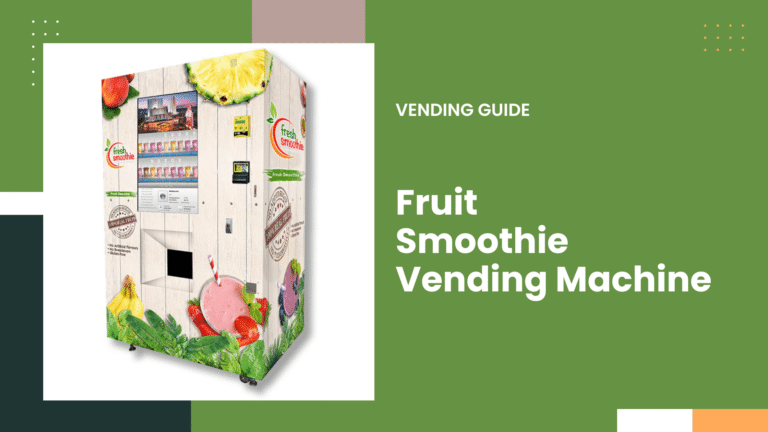Vending Machine Business Profits Tanger Outlet Phoenix
Vending machines at Tanger Outlets Phoenix earn $250–$600 monthly, with top spots exceeding $1,000. Beauty and travel-item machines perform best, while 10–15% mall commissions, smart placement, and cashless payments improve overall vending business profits.
I have my fair share of experience in launching a vending machine business at new locations.
And I can tell you that due diligence is a priority, along with your budget and expectations.
| Metric | Typical Range |
|---|---|
| Startup cost (per machine) | $2,000–$10,000 (machine + stock) |
| Gross revenue (per month) | $300–$600 (average) |
| Net profit margin | 20–35% of sales |
| Location commission | 5–20% of sales (aim ≤15%) |
| Top-selling categories | Snacks, drinks, frozen treats, specialty goods |
Case Examples and Operator Insights
Public earnings data for Tanger Outlets Phoenix vending operations are limited.
However, nearby listings show trends; a Phoenix-area toy vending route was advertised with $4,500+ monthly cash flow across several prime machines (via BizBuySell).
Industry forums also suggest most vendors earn $100–$200 net per machine per month in solid locations.
Smaller operators average $35–$150 per week in sales, with top placements earning $400/month or more.
So, in short, you can expect a few hundred dollars in monthly revenue per machine, with high-traffic sites outperforming quieter areas.
Example:
Tanger Outlets Phoenix installed niche beauty-product vending machines (“Tress Obsessed”) to target fashion-oriented shoppers (Patch). While revenue data isn’t published, it demonstrates how creative product niches can enhance outlet-center vending success.
Key Profitability Factors in Outlet Malls
1. Foot Traffic
Mall traffic directly impacts sales.
Locations near entrances, food courts, and anchor stores typically perform best.
For instance, Tanger Phoenix draws ~4.5 million annual visitors. However, Arizona’s extreme heat may reduce outdoor traffic in the summer months.
So, your location will determine whether the venture will succeed or fail flat.
2. Machine Placement & Visibility
Yes, location is important, but positioning machines where they’re easy to spot and access is another thing you need to watch out for.
Poorly placed or hidden machines consistently underperform, and I want your Machines to meet ADA standards, be well-lit, and display clear signage to attract attention.
3. Lease & Commission Terms
Most malls charge a percentage of gross sales (5–20%) instead of flat rent, and negotiating a 15% or lower commission helps maintain profit.
In my experience, most Malls will require proof of insurance or a minimum rent clause, and ensure all terms are written and clear.
4. Product Mix
What good is a vending machine if your items are not in demand or suck right?
So, you need to stock based on shoppers’ needs. Bottled water, coffee, and grab-and-go snacks are reliable high-margin items.
Healthy options like protein snacks or salads can bring 30–45% margins along with Impulse items such as chargers, earphones, and collectibles, as they perform well near high-traffic corridors.
5. Payment Options
Modern vending thrives on convenience.
Machines that accept credit cards and mobile payments often see up to double the sales of coin-only models (Vending Locator).
Be mindful of 2–3% transaction fees, which are usually offset by higher volume.
6. Operating Costs
Typical expenses include:
- Electricity: $10–$50/month (for refrigerated units)
- Inventory (COGS): ~50% of sales (Pyramid Acceptors)
- Maintenance & repairs: $100–$300 annually per machine
- Restocking fuel/labor: Varies by route
Tracking expenses closely ensures accurate profitability analysis.
7. Seasonality & Events
Sales spike during holidays, back-to-school, and tourist seasons. To adjust inventory seasonally (e.g., festive candy, sunscreen, or cold drinks) is key.
You can’t be lazy in this venture, as it is cutthroat business.
Off-peak months may require promos or relocating underperforming machines.
Monthly Revenue
| Traffic Level | Estimated Monthly Gross Revenue | Approximate Monthly Net Profit |
|---|---|---|
| Low-traffic location | $50 – $200 | $8 – $60 |
| Medium-traffic location | $200 – $500 | $30 – $150 |
| High-traffic mall/retail | $500 – $1,000+ | $100 – $250+ |
| Premium/prime location | $1,000 – $2,000+ | $250 – $800+ |
Well-placed machines in high-traffic shopping centers can generate hundreds of dollars in monthly sales.
Industry reports estimate $300–$600 in gross revenue per machine per month with strong sites occasionally earning over $1,000/month and weak placements making as little as $75/month.
Profit Margins
After factoring in inventory, labor, fuel, and location commissions, average vending profits are modest but steady.
Typical net profit margins range between 20% and 35% roughly $50–$150 in monthly profit on $300–$600 sales.
Experienced operators often target 50%+ gross margins by buying stock in bulk. High-return products include bottled water (≈86% margin) and coffee (up to 200%).
Top Product Categories
| Category Type | Performance Insight |
|---|---|
| Snacks & Beverages | Most common and reliable sellers; account for ~30% of all vending machines. |
| Frozen & Ice Cream Items | High impulse purchases; perform best in warm climates or near food courts. |
| Novelty & Toy Machines | Attract children and collectors; often placed in entertainment or outlet centers. |
| Health & Beauty Items | Growing niche; popular in malls and airports (e.g., beauty-product vending). |
| Tech & Travel Essentials | Strong sellers in outlet malls and tourist-heavy locations. |
Tips for Outlet Mall Vending Operators
| Tip | Description |
|---|---|
| Obtain Permits and Licenses |
Secure the correct business license for each machine type. Water or ice units require health permits and testing. Register with state tax authorities and comply with local regulations.
|
| Negotiate Smartly |
Clarify commission rates, lease duration, and placement rules with mall management. Target commission rates at or below 15% and request listing in mall maps or promotions for visibility.
|
| Offer Multiple Payment Methods |
Support cash, card, and mobile wallet payments to boost impulse purchases. Contactless options are expected by modern shoppers and can increase sales significantly.
|
| Maintain Regularly |
Restock based on actual sales data. Keep machines clean, verify coin and card acceptors function correctly, and schedule preventive maintenance to avoid downtime.
|
| Track Sales and Adjust Stock |
Use DEX or inventory software to monitor performance. Rotate slow sellers and replace them with seasonal or trending products to keep the selection fresh.
|
| Manage Inventory Costs |
Buy popular items in bulk and negotiate supplier discounts. Partnering with distributors or brokers can reduce sourcing and shipping expenses.
|
| Ensure Compliance & Safety |
Adhere to ADA control height standards (15″–48″). Clearly label ingredients and allergens on food machines. Maintain liability insurance if required by property managers.
|
| Leverage Technology |
Adopt vending-management tools or spreadsheets to log sales, costs, and inventory. Data-driven insights help optimize routes and product mix for better margins.
|
| Enhance User Experience |
Keep machines well-lit, clean, and clearly priced. Use branding wraps or tasteful graphics to draw attention and match mall aesthetics.
|
| Scale Strategically |
Expand only after confirming site profitability. Plan for inventory storage, transport logistics, and staffing before adding more machines or routes.
|






